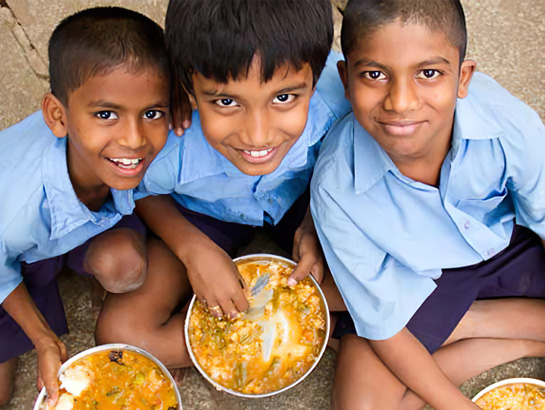In a groundbreaking achievement, HarvestPlus and HarvestPlus Solutions have reached a remarkable milestone: over one million learners across India, Kenya, Malawi, and Tanzania have benefited from nutritious school meals through the Home-Grown Nutritious School Meals Program (HGNSMP) by the end of 2024. This model is being piloted in several countries in Africa, Asia, and Latin America.
This accomplishment highlights the transformative power of innovative food systems and strategic partnerships in combating malnutrition and hidden hunger with school-aged children as a strategic entry. The HGNSMP is designed to improve children’s nutritional well-being by incorporating nutrient-enriched staple foods into school meals, following a multi-faceted approach.
A Sustainable Model
The program’s success is rooted in its sustainable model, which includes:
- Supporting local production and sourcing biofortified crops locally, providing structured markets for local farmers
- Collaborating with policymakers, development organizations, and private sector processors to align with national nutrition goals
- Implementing a robust sensitization and training program for education policymakers, teachers, students, parents, and communities on the benefits of biofortified foods, healthy diets, and general hygiene
- Supporting schools with resources and training to establish their own biofortified school plots
Scaling Reach and Impact
Through the nutritious school meals program and extensive awareness campaigns across the four countries, the impact is significant:
- Over 936,504 learners across Kenya, Malawi, and Tanzania have benefited
- 123,394 learners in India have benefited, totaling over 4.4 million meals served
- Over 7,800 smallholder farmers have been supported to grow and market biofortified crops to schools
Voices from the Field
The success of biofortified school meals is expressed by students, educators, and parents: “Our school attendance has improved significantly since the school feeding program was introduced,” shared a head teacher at Chankhandwe School in Lilongwe East, Malawi.
“The biofortified porridge we now receive in school tastes much better than the ordinary porridge we used to have,” said a student from Katowo School in Rumphi, Malawi.
Key Outcomes and Lessons Learned
Based on coverage and the quality of the meals delivered, the program is expected to yield several key outcomes, that are likely to lead to improved learning outcomes, and better human capital development. These include:
- Healthier children
- Improved school attendance
- Improved knowledge on healthy diets and general hygiene practices for students and teachers
- Empowered smallholder farmers contributing to rural economies
Building Together for the Future
By working together, HarvestPlus and HarvestPlus Solutions are committed to expanding the program’s reach to more schools and learners, while strengthening local food systems. To sustain and build on this momentum, the program will continue to collaborate with public and private sector entities, policymakers, school meal platforms, and national, regional, and global partners to ensure safe and nutritious school meals. This collaboration will focus on increasing the availability of nutrient-rich staples and promoting their integration into school meals, working closely with farmers, school leaders, and other stakeholders.
The milestone of reaching over one million learners demonstrates the transformative power of innovation, collaboration, and commitment to combating malnutrition among future generations.
